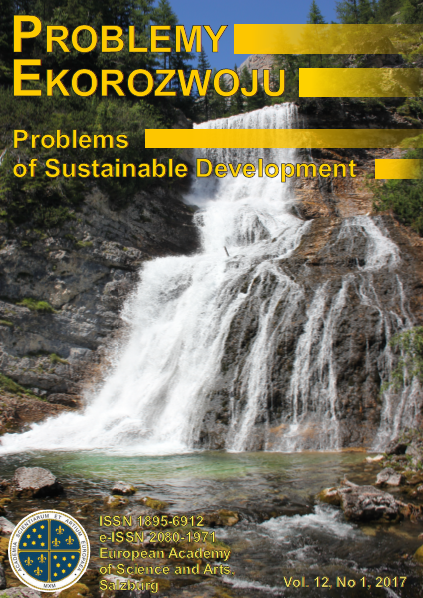Trójwymiarowe podejście do edukacji dla zrównoważonej przyszłości
Živilė Sederevičiūtė-Pačiauskienė, Viktorija Žilinskaitė-Vytienė, Ilona Valantinaitė
Vilnius Gediminas Technical University, Saulėtekio 11, Vilnius, 10223, Lithuania
E-mails: zivile.sedereviciute-paciauskiene@vgtu.lt; viktorija.ziliskaite-vytiene@vgtu.lt; ilona.valantinaite@vgtu.lt
Abstract
The concept of sustainable development is used in a growing number of new contexts (ever-modernising technologies, developing science, environmental protection, politics) and levels (global, regional, national, institutional, personal). The concept differs depending on an area in which it is used. Business, technologies and politics use typical, already existing approaches to sustainable development. The projection/transposition of sustainable development paradigm into the sphere of education, science, technologies, economy, environmental protection and politics acquire the specifics of a sphere, namely structure and terminology, and has different elements. A wide field of human activity and different levels of the implementation of the concept of sustainable development make the analysis of this development and its implementation in the education sector more difficult. Both scientific and practical educational discourse need common parameters, common dimensions which unify the different areas of sustainable development and allow educators to accurately convey a full picture of this development. In this article, we will highlight educational approach towards a sustainability paradigm by analysing the common dimensions of sustainable development. We will talk about the levels of the implementation of sustainable development by concentrating on education at a personal level. Having applied the triangle of the dimensions of sustainable development (Place, Permanence, Persons), created by L. Seghezzo, to explain and analyse the concept of quality of life, in the article, we will present a three dimensional model of education for sustainable development.
Key words: sustainability, sustainable development, quality of life, education
Streszczenie
Termin rozwój zrównoważony jest używany w coraz większej ilości nowych kontekstów (technologicznym, rozwoju nauki, ochrony środowiska, polityki) i na różnych poziomach (globalnym, regionalnym, krajowym, instytucjonalnym, indywidualnym). Konsekwentnie będzie on także różnorodnie interpretowany. W świecie biznesu, techniki i polityki wykorzystywane jest tradycyjne, już istniejące podejście. Projekcja/transpozycja paradygmatu zrównoważonego rozwoju w sferę edukacji, nauki, techniki, ekonomii, ochrony środowiska i polityki wymaga określenia struktury i terminologii, składających się z różnych elementów. Różnorodność ludzkich działań na różnych poziomach wdrażania koncepcji zrównoważonego rozwoju powodują, że badanie tego rozwoju i jego impelmentacja w sektorze edukacyjnym to trudne zadanie. Dyskurs edukacyjny, zarówno naukowy jak i praktyczny, wymaga pewnych wspólnych parametrów i odniesień, które ujednolicają różne konteksty zrównoważoności i pozwalają edukatorom trafnie przekazać wielowymiarowość tego rozwoju. W tej pracy skoncentrowano się na edukacyjnym podejściu do paradygmatu zrównoważonego rozwoju poprzez analizę jego składowych. Przedstawione zostaną poziomy implementacji rozwoju zrównoważonego w odniesieniu do edukacji na poziomie indywidualnym. Dzięki odwołaniu do wprowadzonego przez L. Seghezz‘ego trójwymiarowego podejścia do wymiarów rozwoju zrównoważonego (Miejsce, Trwałość, Ludzie) możliwa będzie analiza i wyjaśnienie koncepcji jakości życia, co prowadzić będzie do prezentacji trójwymiarowego modelu edukacji dla zrównoważonego rozwoju.
Słowa kluczowe: zrównoważoność, rozwój zrównoważony, jakość życia, edukacja
Problemy Ekorozwoju 12(1)2017: 63-69
